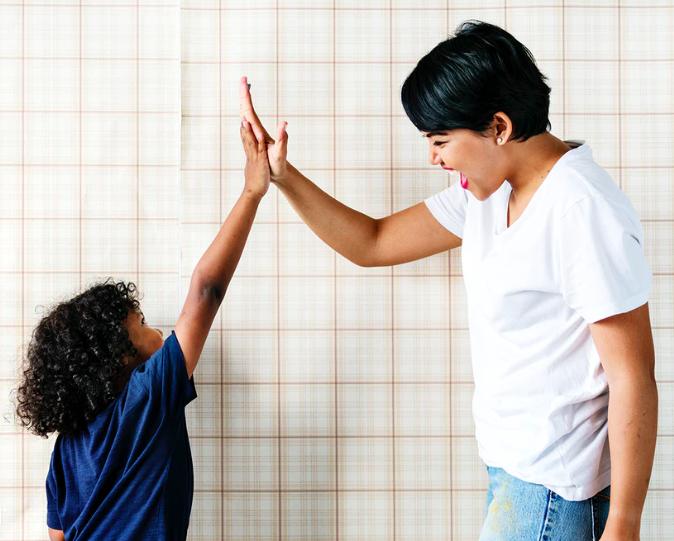Why Social Emotional Learning is Important for Kids with ADHD
One of the things I love most about my Pre-K students is their energy. They keep me on my toes as they bounce from one activity to the next. However, I began to notice this difficulty to focus on more than one activity for a longer period of time transcribed into their inability to focus on lessons too. As I began to integrate Social Emotional Learning (SEL) into our curriculum, I noticed how helpful it is for students with ADHD and so this support would be helpful outside of the classroom as well. Social emotional learning provides kids with ADHD the tools they need to create a path to success, face difficult challenges, address anxiety and anger, and maintain positive relationships. Lastly, a focus on SEL can give kids with ADHD (and their parents) exactly what they need to self-reflect and feel grounded in the present moment.
1. Creating a Path for Success
Parents and teachers alike love to see their children find joy in their success. Every path looks differently and for children with ADHD this path might seem more challenging. Social emotional learning teaches the skills for children to feel self-confident in their ability to create their own path by recognizing their strengths, or superpowers. The impulsiveness of a child with ADHD might propel him or her to move full speed ahead on this path but by realizing one’s strengths and weaknesses children can slow down and make sure each step is based on a responsible decision rather than an automatic response. Furthermore, children with ADHD will most benefit from celebrating “small” successes along the way. For example, an ultimate goal of finishing the school year can seem daunting but “small” successes such as mastering a new reading level or spelling more difficult words will increase a child’s self-motivation and self-confidence. These are successes a child can be proud of on one’s own and share that excitement with others. At home parents and their child can utilize a goal chart to track these accomplishments. Having conversations about what their successes were that day will help kids remember what they accomplished and how they felt when they made that accomplishment.
I’ve learned from working with kids with ADHD the importance of connecting purpose with interests. It can be easy to feel lost and distracted when a purpose, or task such as homework, isn’t connecting with a child. Connecting purpose with interests not only helps kids identify what their interests are, they can also connect those interests to emotions, interests or experiences that make them happy as opposed to other experiences that might be sources of stress for them. I always tell parents to encourage their child’s interests as I believe this can enhance their learning experiences. Incorporating interests will help kids to stay focused on their purpose and will feel accomplished. Parents can have conversations with their child about what they liked about a particular task and this will help both the child and parent understand what motivates them and what challenges them.
2. Facing Difficult Challenges
An essential component of SEL is strengthening the ability to work with others especially in the face of difficult challenges. Kids with ADHD struggle more with challenges because they require more focus than a child may be able to give in a certain amount of time. This is why teamwork, whether it be with a group of students or a parent, will often provide the support needed to face what seems impossible. A team can set an example of what it looks like to communicate clearly, use active listening, and understand different perspectives. Kids with ADHD can then learn how to employ these skills for themselves. Just as it is important to connect purpose with interests there is a benefit to helping kids understand challenges as opportunities for learning. If a child has a set of goals it is easy to connect how taking on a difficult challenge will help a child accomplish one of those goals. Solving a problem or facing a difficult challenge doesn’t have to be done alone and a child with ADHD will instill the positivity associated with having that encouragement from others. If parents are using a goal chart at home it would be helpful to outline what might be challenging about accomplishing that goal and how the parent can best support their child with facing this challenge.
3. Addressing Anxiety and Anger
When a child has ADHD he or she often acts out impulsively due to an overwhelming sense of emotions. The emotion I’ve seen most often with this behavior is anger. Self-awareness as a core competency of SEL helps children recognize and regulate emotions such as anger. Having conversations about why a child is feeling that way can be difficult to do in the moment the emotion is occurring especially when a child has ADHD. These conversations are important but can only have successful results if a child is first able to feel calm after acting impulsively. For example, one of my students last year acted out of anger and because it was during a time when children were engaged in free play, I needed to give him the space to breathe elsewhere that wasn’t still busy with activity. We went for a walk and after he had time to catch his breath, I talked to him; not about his anger but about what he was worried about. I figured at some point during free play he was worried his expectations of how something was supposed to happen wasn’t happening and therefore he acted out. I learned even as an adult anger is an emotion I often deal with when I’m feeling anxious or uncertain about something. By giving my student the space to talk through his worries he was able to recognize that reacting with anger wouldn’t change the outcome and in the future he can work on evaluating the consequences his actions would have on himself and others. After their child acts out impulsively at home, parents can try giving them first the space to breathe, and then have a conversation about what was worrying them.
4. Maintaining Positive Relationships
In any stage of life having a support system is essential for seeking advice and comfort. I will always advocate for my students especially for the ones who have looked to me for support. Developing social skills is difficult for kids with ADHD because of their impulsive behavior. This is difficult for parents as well who see their kids struggle with building relationships with other kids. Any adult who has a child with ADHD in their life knows it takes a village to provide the support and patience to teach these social skills. Parents can encourage their child to seek out support and know when to ask for help. I learned the importance of being present and engaged with kids who struggle with “big emotions” and providing feedback when it is needed. Sometimes it helps just to sit by someone who is having a hard time, and provide an assurance by your physical presence you are also emotionally present and available to give support in any way that is needed.
5. Taking a Break
A child with ADHD needs breaks often to help refocus and can then feel motivated to accomplish the task they took a break from. These breaks can look differently depending on what the child needs to feel ready to focus again. If they are losing interest in their task, the break should be engaging. For example, when taking a lunch break the child can help their parent prepare lunch rather than sitting and waiting for it to be ready. Kids with ADHD can also benefit from movement breaks. At school this might mean stepping away from school work to run a few laps in the gym. For parents at home this could look like stretches, dancing, jumping jacks, or running outside if possible. Lastly, whether a break is needed from a task like homework or after a reaction to “big emotions” there are different ways to engage in calming our bodies without telling someone to “calm down.” Yoga, for example, uses breathing to help you feel centered and grounded. When parents engage in these activities at home with their child they are setting an example for positive alternatives to acting out and holding in “big emotions.”
I learned with my own students that the same strategies might not work for all students. Parents of more than one child have also expressed to me the significant differences between their children. This makes engaging in SEL all the more exciting! Finding the right strategies for kids with ADHD may take some time but once you do, your child will be motivated, engaged, and most importantly excited about their path to success.




